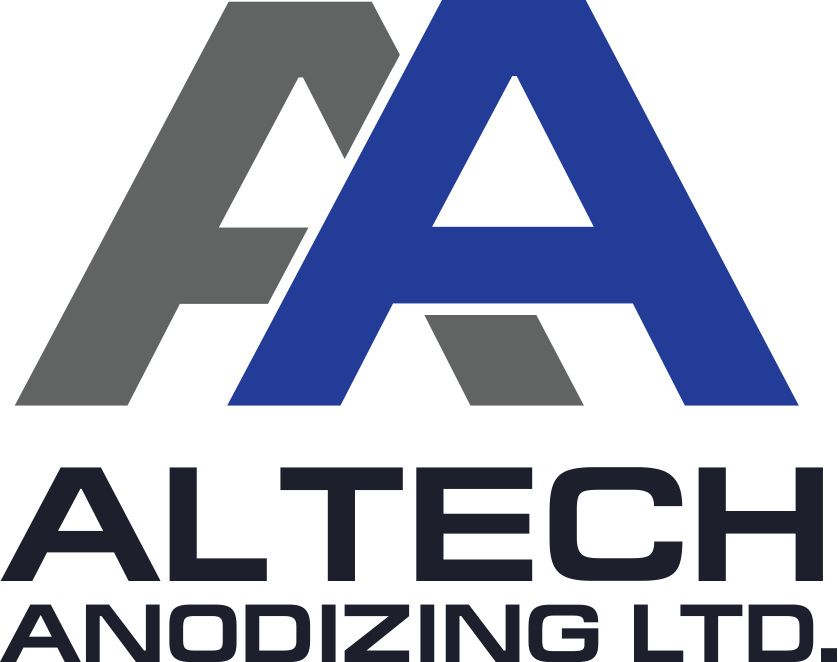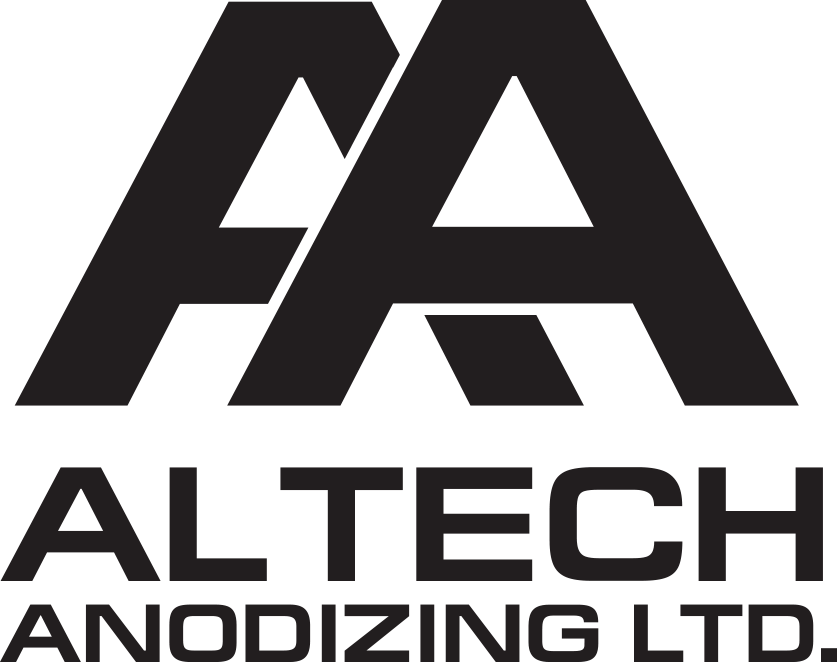Preparing Material for Anodizing
What information should I provide to Altech when submitting a job?
It is always best if we understand the final application of the item before we anodize in order to advise you of your best options.
How do I prepare my parts for the best quality Anodizing?
To ensure that the quality of your anodizing is the best it can be, here are some important tips to follow before you send your order in to Altech.
What should I expect the final finish to look like?
The final finish of the anodized surface depends on the condition of the base metal before the process.
What can I do to ensure that my product meets my anodizing expectations?
All imperfections need to be removed before anodizing by procedures such as polishing, abrasive blasting, finishing etc. depending on the desired appearance.
What surface gives a matte finish?
The rougher the surface, the more matte the finish will be.
How do I achieve a shiny finish?
For a shiny finish, it is essential that the base material is highly polished before being anodized.
Is it possible to achieve a reflective finish?
A high degree of reflectivity can be achieved if requested, but certain alloys will always develop a matt surface regardless.
Does anodizing hide imperfections?
No, anodizing typically highlights scratches and other surface and material imperfections. Surface preparation is fundamental to achieving an excellent finished product.
What things should be avoided before anodizing?
- Do not apply sticky tape directly to surfaces that are going to be anodized. The residue that it leaves behind will not be removed by our standard pre-treatment processes.
- Do not handle untreated items with your bare hands as it will cause fingerprint corrosion.
- If you are going to use abrasive blasting to prepare your base material, ensure that it is done evenly. Inconsistencies that are created by this process will be accentuated by anodizing.
- If you are linishing your item, it is important to use separate finishing belts for aluminum and not aluminum materials. This will avoid the introduction of foreign particles being embedded into the surface.
- Not visible before anodizing, it will show up as ugly gray marks or pitting once the process is completed.
- Do not use paints or varnishes on the surfaces that are going to be anodized.
- Make sure that you use the proper alloy welding wire to prevent your weld from turning black or gray after anodizing.
- Do not use excessive heat when welding as it can affect the properties of the metal which causes irregular discolouration once anodized.
About Anodizing
Is Anodizing Safe?
Anodizing is a safe and environmentally friendly technology that is not harmful to human health or the environment in any way.
What are Racking Marks and can they be avoided?
Racking and fixturing are a critical part in the anodizing process. Racking marks are unfortunately unavoidable but we have refined our skills to be incredibly precise in order to minimize the point of contact on your parts.
What is the difference between standard and hard anodizing?
The difference is that hard anodized surfaces can be up to 8 times thicker and 10 times harder that standard anodized surfaces.
Does anodizing effect the dimensions of the component?
Yes, typical film thicknesses produced are 5-15 microns for Standard Anodizing and 25-70 microns for Hard Anodizing. The growth in size of the component will be approximate 50% of the film thickness.
During the anodizing process, parts are chemically etched to prepare and clean the surface for anodizing. Etching results in the removal of some aluminum while ultimately providing a matte finish. The longer a part is etched, the more aluminum will be removed. Therefore, the dimensions of the part will be slightly reduced. We can vary the etching time depending on the tolerances needed or in some cases eliminate this step.
What effect does the grade of aluminum have on the results?
The purer grades of aluminum produced from sheet or bar produce better results than components made from cast aluminum. Whilst there are about 34 different grades of cast aluminium alloys, very few are suitable for decorative/coloured anodizing. To predict the result of the finish, it is necessary to identify the grade of alloy. We are happy to help you with your selection of a suitable alloy.
Are dyed anodized components durable?
Colours are applied through a dyeing process after anodizing and then sealed to create a smooth durable surface. The colours are long lasting and UV light resistant. Some colours are more resistant than others depending on how harsh the environments they exist in.
Is Anodizing Durable?
Anodized products have extremely long life spans and offer savings through maintenance and operation – anodizing reduces friction and increases lubricity, an advantage with fitted components and for moving parts. Hardcoat anodizing further improves wear resistance and general coating durability.
Does Anodizing provide Color Stability?
Exterior anodic coatings provide good stability to ultraviolet rays, do not chip or peel, and are easily repeatable.
Is Anodizing Easy to Maintain?
Scars and wear from fabrication, handling, installation, frequent surface cleaning and usage are virtually non-existent. Rinsing or a mild soap and water cleaning usually will restore an anodized surface to its original appearance. Mild abrasive cleaners can be used for more difficult deposits.
What Aesthetics Can Anodizing Achieve?
Anodizing offers a large number of gloss and color alternatives while minimizing or eliminating color variations. Unlike other finishes, anodizing allows the aluminium to maintain its metallic appearance.
What is the Cost?
A lower initial finishing cost combined with lower maintenance costs present greater long-term value.
What are the Environmental Advantages of Anodizing?
Unlike the anodizing process, coatings – for example, paint – can dramatically reduce the ability to recycle aluminum. Paints, plastics, and plating rely on problematic materials in their production that can compromise green objectives. Altech takes all necessary environmental and safety precautions, including waste water treatment and proper environmental disposal of solid waste by-products.
Anodizing, on the other hand, is “recycle-neutral” and makes minimal use of materials such as volatile organic compounds (VOCs) or heavy metals.
What is the MIL Spec for Anodizing?
Anodizing is typically specified using MIL-A-8625F.
Altech Anodizing Ltd.’s standard processes for Type II and Type III sulphuric acid anodizing are generally in accordance with the process requirements of MIL-A-8625F.
One difference between MIL-A-8625F and Altech’s standard processes is the exception of paragraph 3.7.1.2 of MIL-A-8625F which requires that production parts or test specimens undergo a salt spray test to determine corrosion resistance. This test is not regularly performed by us for cost reasons. However, given our strict chemical and process controls, we have every reason to believe that all parts processed by us would pass the prescribed salt spray test. We can arrange salt spray testing of test specimens or your parts after processing if requested.
What is Coating Thickness?
Anodizing converts aluminum into its oxide, aluminum oxide. The aluminum oxide coating is thicker than the aluminum consumed during the process and the dimensions of the anodized aluminum therefore change. The dimensional changes are a function of temperature, electrical current density applied during the anodizing process, chemical bath parameters, as well as the alloy being anodized.
Under typical Type II anodizing conditions, the dimensional growth of an anodized part will be 2/3 in and 1/3 out, per surface.
Under Typical Type III anodizing procedures, the dimensional growth of an anodized part will be ½ in and ½ out.
What Affects Final Product Dimensions?
During the anodizing process, parts are chemically etched to prepare and clean the surface for anodizing. Etching results in the removal of some aluminum while ultimately providing a matte finish. The longer a part is etched, the more aluminum will be removed. Therefore, the dimensions of the part will be slightly reduced. We can vary the etching time depending on the tolerances needed or in some cases completely eliminate the step.
Lets Work Together
We are Your Partner, not just a Supplier.


